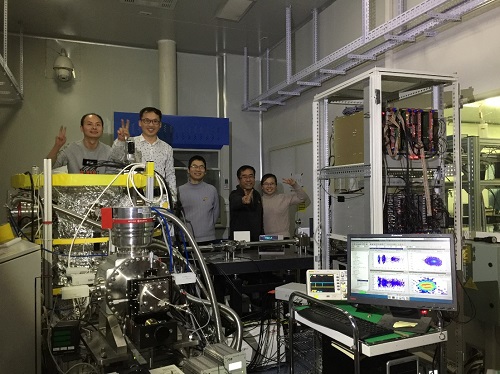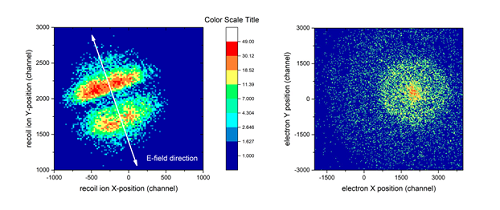HHG-XUV Laser Lights in Reaction Microscope for Ultrafast Dynamics Studies in Lanzhou
On 5th December 2018, at the Institute of Modern Physics, Chinese Academy of Sciences in Lanzhou, the Atomic and Molecular Dynamics Team succeeded in putting the XUV laser produced by high-harmonic generation (HHG) method and the associated reaction microscope into operation, and the first kinematically-complete experiment on photoionization of atoms by XUV photon has been initiated which is also the first study committed in the reaction microscope with HHG-XUV in China.
Atto-second XUV laser pulse trains were successfully obtained with a photon energy range of 20-100 eV, the laser system is introduced from KMLab. In the meantime the team developed a new reaction microscope dedicated to perform kinematically-complete measurements on ultrafast dynamics, which can provide very local dense supersonic atomic/molecular beam under the ultrahigh vacuum condition (10-11mbar). The platform combining both frontier technologies makes it possible to take snap-shots on the ultrafast fragmentation dynamics induced by XUV photons.
The platform is dedicated to the fundamental scientific problems of quantum few-body dynamics, and provides a crucial method to investigate the ultrafast interactions of XUV photons on atoms/molecules. Fully differential data of such reactions can be obtained to stringently test various theoretical models. As a prototype, the experiment on photoionization of helium atoms using single photon of the energy of about 30 eV has been successfully conducted, the photoionized recoil ions and the photoelectrons are recorded as shown in figure 2. Detailed analysis of the data is undergoing.
The setup also paves the way to study and compare the ultrafast processes induced by highly charged ions produced by accelerators and UXV lasers. The atto-second laser, in combination with the heavy ion storage ring, is of great potentials in the investigation of spectroscopic properties of highly charged heavy ions.

Fig 1. The team celebrates the first XUV light on target in reaction microscope

Fig 2. Experimental spectra of photoionization of helium atoms by single XUV photons.
Left: position spectrum of He+ ions, the arrow indicates polarization direction of the XUV photons. Right: Projection of photo-electrons on the detector plane.



 甘公网安备 62010202000713号
甘公网安备 62010202000713号


